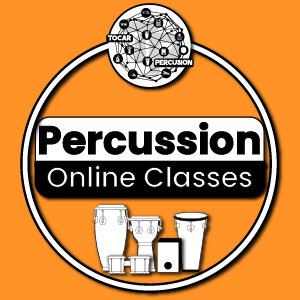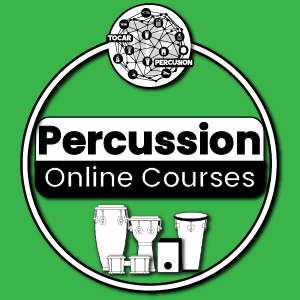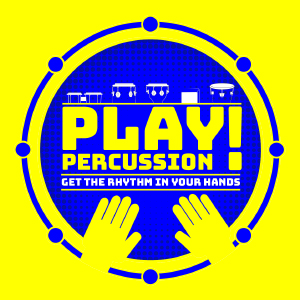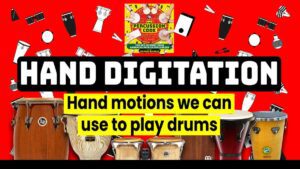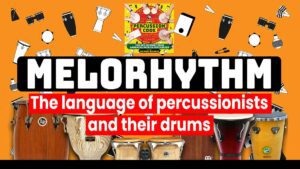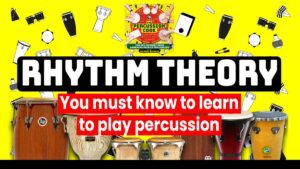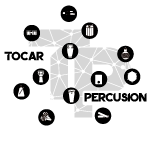Start your learning path in percussion today!
Learn about MELORYTHM, the language of percussionist and their drums
Author: Facundo Alvarez, Percussion teacher and Facilitator
This concept I’m about to share with you is a really game changer and is going to change and improve the way in which you will learn to play and develop your playing craft as a percussionist.
Most people think that a percussionist just plays rhythm, which is a half true.
Actually, by learning the concept of Melorhythm, you are going to understand that percussionists not only play rhythms, they also play melody with their drums.
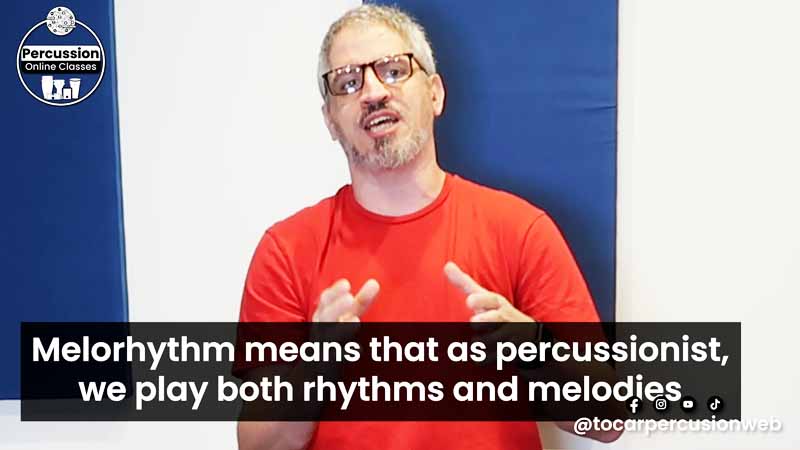
And that’s going to boost your learning process in percussion.
Let’s see how this concept is applied to practice.
Melorhythm and Percussion instruments
First of all, any percussion instrument has notes in it.
Let’s see some examples of that.
Agogo Cowbell
First of all, let’s pick a Brazilian cowbell that has 2 notes, a low note and high note.
The first one, the low one, sounds when you play the big bell and the second, the high one, sounds when you play the small bell.
Using and combining them, you can build any kind of rhythm to play it.
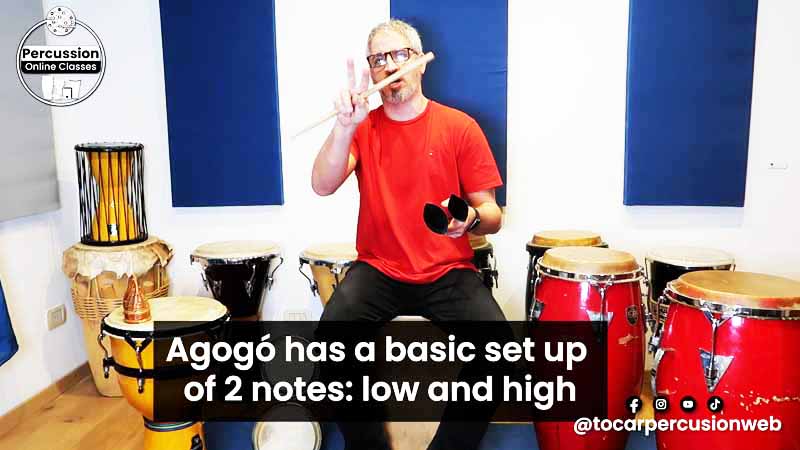
Caxixi Shaker
This is another Brazilian instrument, a shaker. It also has a low sound or low note when you play it plain and you can find a high note when you play and accentuate it to the front.
And when you combine them you can build several rhythms with it.
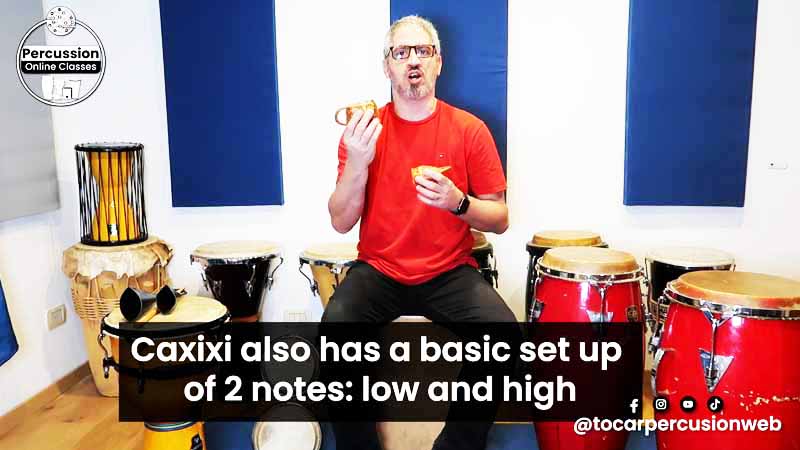
Bongo
The bongo has 3 notes or sounds
You can find the low note in the big drum that is called the “Hembra”. You can find a high note in the little drum that is called the “Macho”. And then you have the Ghost Notes that you can play on both drums.

(If you want to know more about Bongo´s Sounds and how to play them click in here)
And combining these three notes you can build, again, different rhythms and melodies with it.
Cajón
The cajon also has 3 sounds.
It has a low note in the center, called “Tone”. a high note in the top, called “Open” o “Chasquido” and the ghost notes in the middle of it.
Again, using these three songs or notes, you can build any rhythm you like.
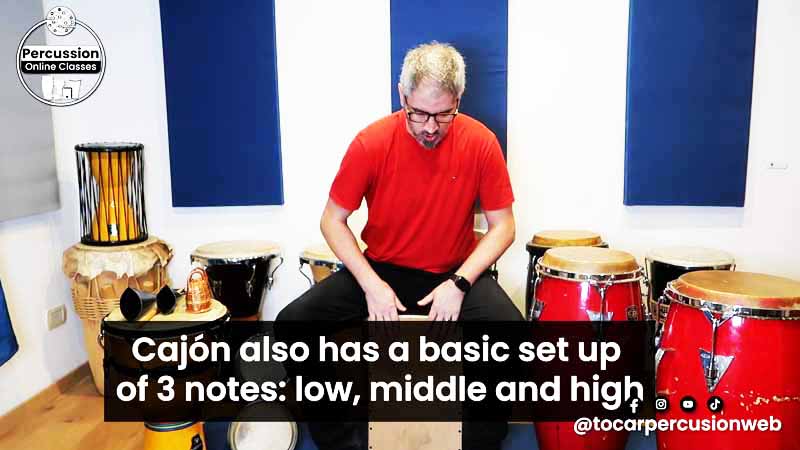
(If you want to know more about Cajon´s Sounds and how to play them click in here)
Conga
The conga has 4 sounds.
The low note is located in the center of the drum, called the “Tone”.
The rest of the sounds are located in the border of the Conga and are the following: First, you have a middle note called “Open” and a high note called “Slap”. In there also you can find the “Ghost Notes”, similar to the ones that you can play in the bongo and the cajón.

(If you want to know more about Conga´s Sounds and how to play them click in here)
Combining these four sounds you can play any rhythm that you want in the conga,
Percussion instruments are connected by a common language
All percussion instruments are connected by a common language based on that structure of all low, high and medium sounds. And that allows us to translate a rhythm from one instrument to another. For doing that you simply have to check how the melody of the rhythm is built and played in one drum and following the sound setup and translate it to the other.
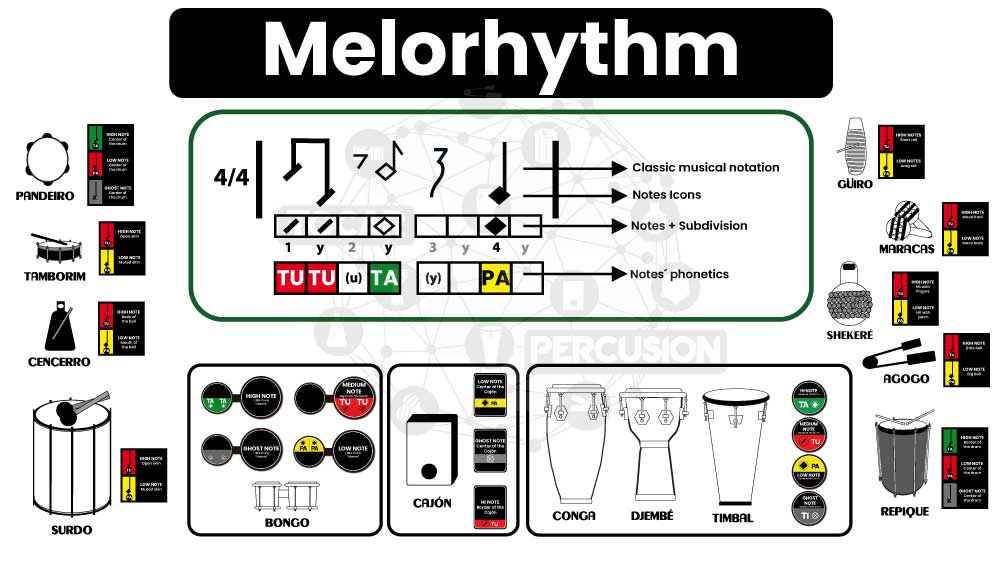
Learn to play percussion online
¡Choose the way to learn to Play Percussion
that best suits your times and needs!
Learn to Play Percussion: Bongó, Conga, Cajón, Djembé, Timbal Brasilero
Percussion Online Classes
In the Online Percussion Classes, I offer individual and face to face classes for you to start learn to play percussion from scratch and learn to play and make music with the percussion instrument you like – Bongó, Cajón, Conga, Djembé or Timbal Brasilero.
Percussion Online Courses
In the Percussion Online Courses I offer you different virtual and self-paced courses options for you to start playing percussion from scratch and develop yourself as percussionist. Courses include several percussion instrument such as: Bongo, Cajón, Conga, Djembé or Timbal Brasilero.
Percussion Online Group Classes
In the Percussion Online Group Classes I offer grupal and face to face classes for you to start learn to play percussion from scratch and learn to play and make music with the percussion instrument you like – Bongó, Cajón, Conga, Djembé or Timbal Brasilero.
Activities suitable to all ages and levels
You don´t need to have previous knowledges of music or percussion to get started.
Melorhythm and Percussion Learning
We can define melody as a sequence of single notes, and that description fits exactly what we do when we play with our drum. We combine different sounds in our drum to build any rhythm.
Thinking it in this way simplifies the process of learning to play rhythms because we can learn them in the same way we learn the songs that we like. What I mean is by singing and repeating them until we learn them.
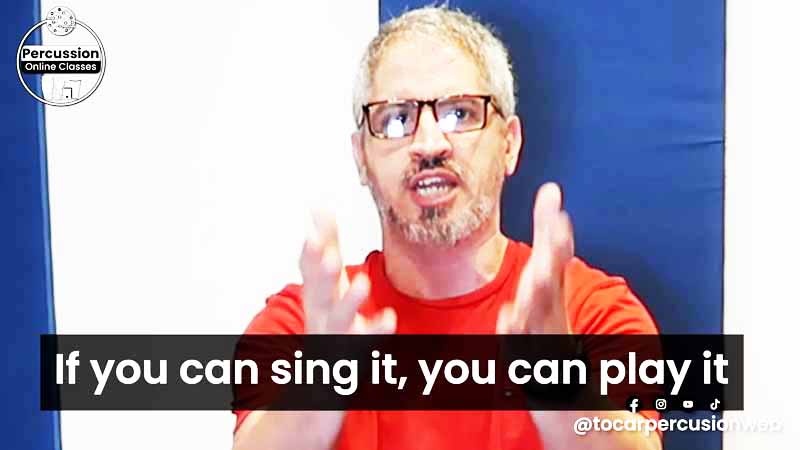
Following that, if you can sing it, you can play it.
One additional benefit that we’re going to get from this way of learning , is that we can reverse engineer any rhythm that we listen to in a song that we like and that we’re going to play. We identify the song´s rhythm setup and then, following that setup, adapt that rhythm to the drum with which we want to play the song.
Melorhythm the Language of Percussion and Percussionists
So to sing the rhythms on any drum, you need to learn a language. A language that, as we´ve seen before, connects the instrument that you can use to build and learn rhythms with the rest of the percussion instruments.
Melorrhythm and The Percussion Code – The Percussionist Alphabet
As a percussion Teacher & Facilitator I created my own learning method, called “The Percussion Code” which includes a percussion alphabet to help my students to learn and compose rhythms more easily in any percussion instrument they want to play.
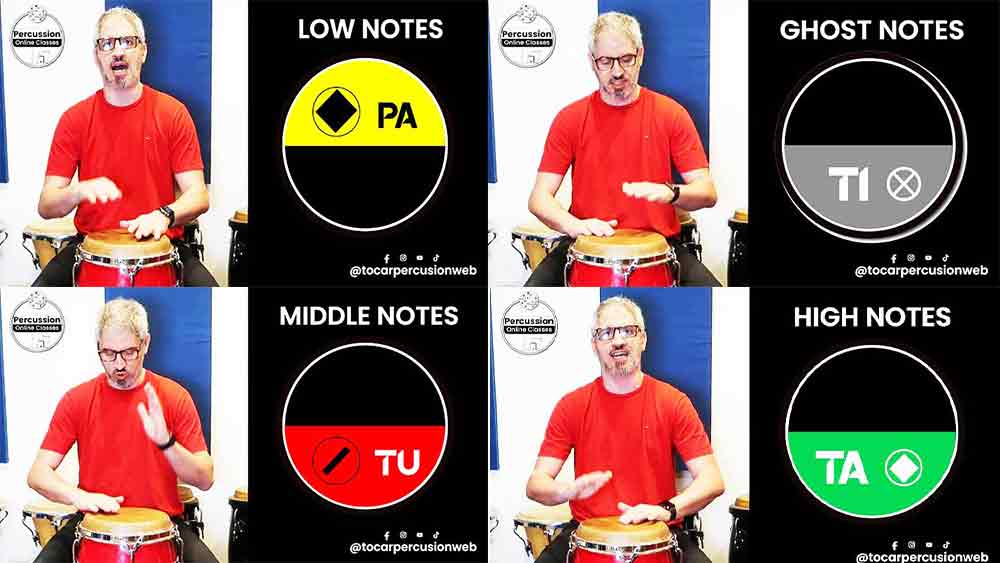
So, following the High, Middle and Low set up of most of the percussion instrument the alphabet is built in this way:
For singing the High note we use the syllable TA
For singing the Medium note we use the syllable TU
For singing the Low note we use the syllable PA
For singing the Ghost note we use the syllable TI
And combining them you can learn and play any rhythm in your percussion instrument.
Melorhythm on Congas – Rhythm of Son (Marcha) from Cuba
Using the Percussion Instrument Alphabet the “Marcha” rhythm in the conga can be sang in this way:
| TI KI TA KI TI KI TU KU |
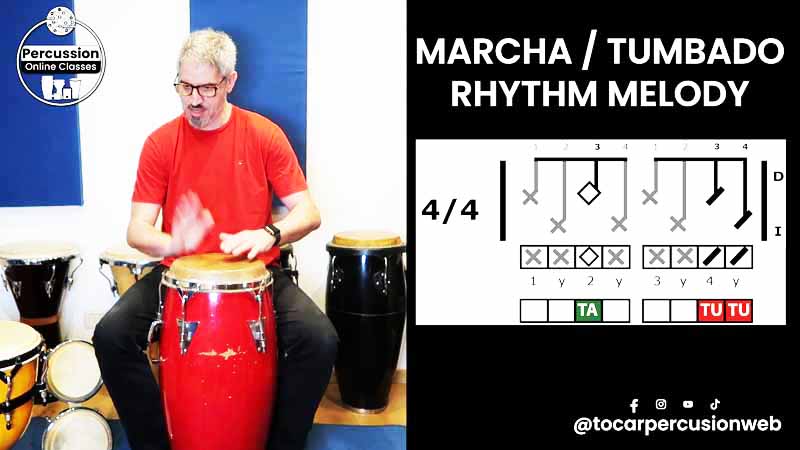
Melorhythm on Bongo – Rhythm of Vallenato from Colombia
Using the Percussion Instrument Alphabet the Vallenato in the bongo can be sang in this way:
| TA KI TA KA TI KI TU KI |
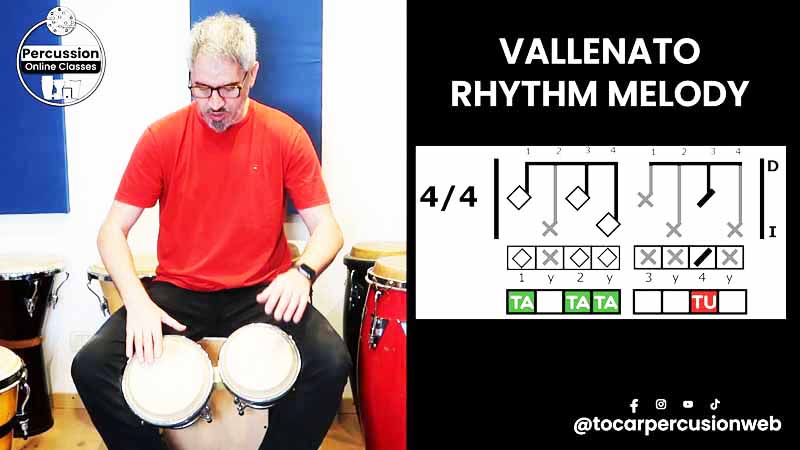
Melorhythm on Cajón – Rhythm of Reggaeton from Puerto Rico
Using the Percussion Instrument Alphabet the Reggaeton in the cajón can be sang in this way:
| PA KI TI PA TI KI TU KI |
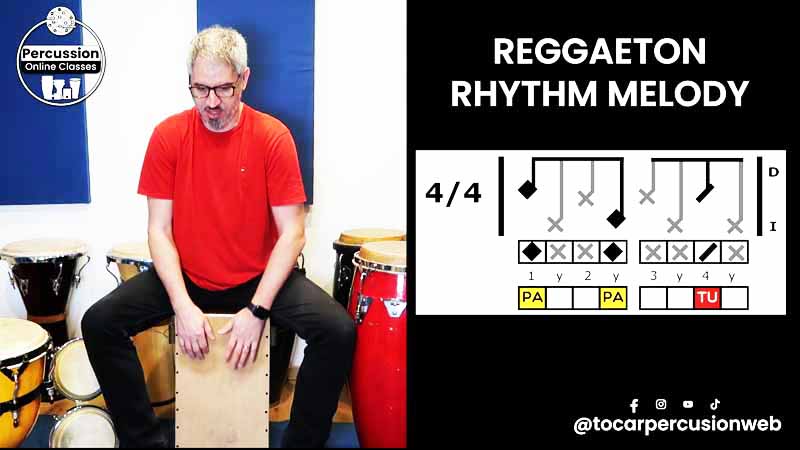
Melorhythm on Djembe – Rhythm of Kuku from Guinee
Using the Percussion Instrument Alphabet the Reggaeton in the cajón can be sang in this way:
| PA – – TU PA – TA – |

Singing the rhythms improves your musicality and playing skills
Singing a rhythm allows us to get the full information that it has. What I mean is, when you learn to play a rhythm just by counting, you focus just in the mathematical part of it, and a lot of vital and important information remains invisible for us. Singing instead allows us to sense and connect with some elements that are really important in the interpretation of the rhythm, such as: accents, cadence, silences, energy, and more.
So in that way, by singing it, we move from the cold sound of the written rhythm of the sheet music, to the live sound of played rhythm
Singing the rhythms improves your creativity
With this new approach, we can improve our creativity as a percussionist. What I mean is there is no limit to what you can sing and by consequence to what you can play on your drum. You just need to give space to ideas to flow and put them into practice.
Well, this is the end of the video. I hope you find it useful and entertaining.
I’ll see you in the next video.
percussion facilitator
Facundo Alvarez
Percussion Facilitator
For 20 years I´ve dedicated myself to develope educational and recreational materials and experiences, with the goal of facilitate access to percussion learning to people of all ages
In all the projects I work motivated by the premise that "Percussion is for everybody" and that "Everyone can learn to play percussion".
My main goal is to help, as many people as I can, to live the unique experience of making music with percussion instruments.
